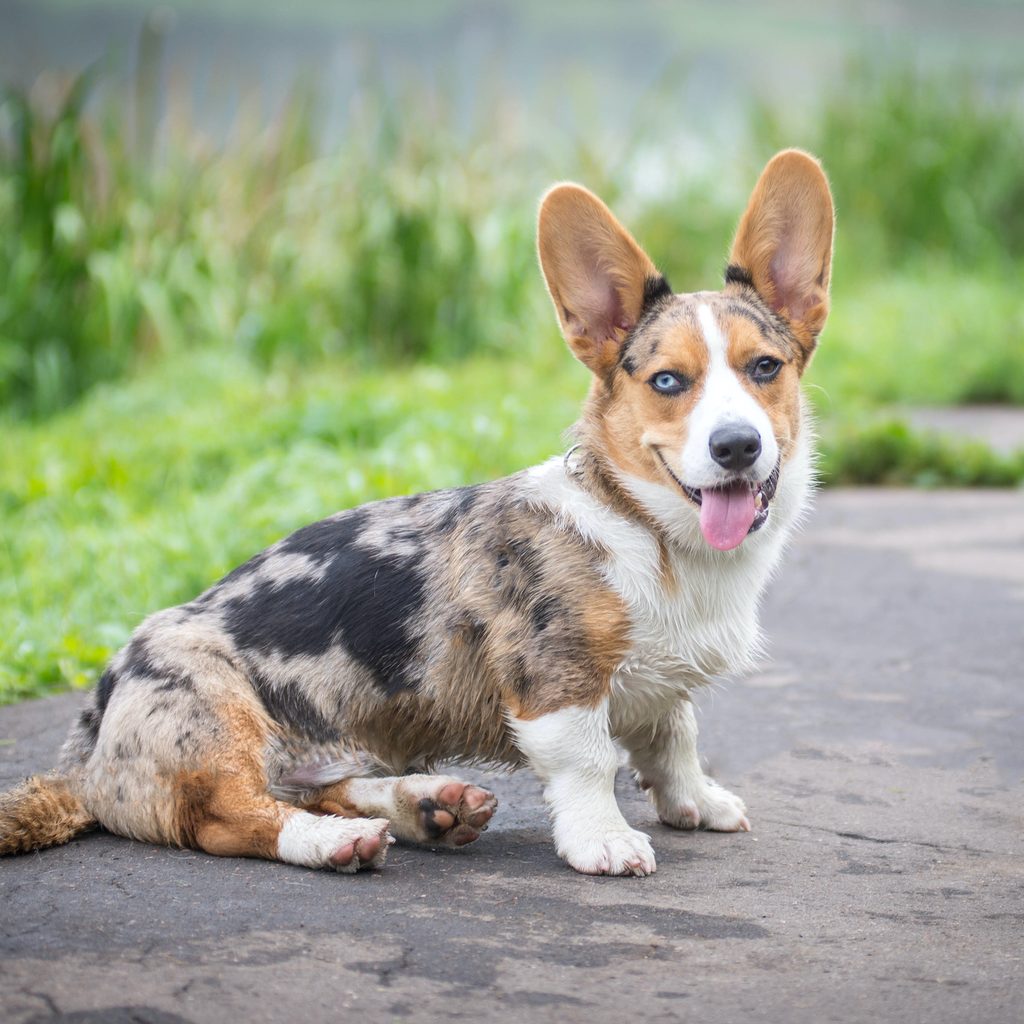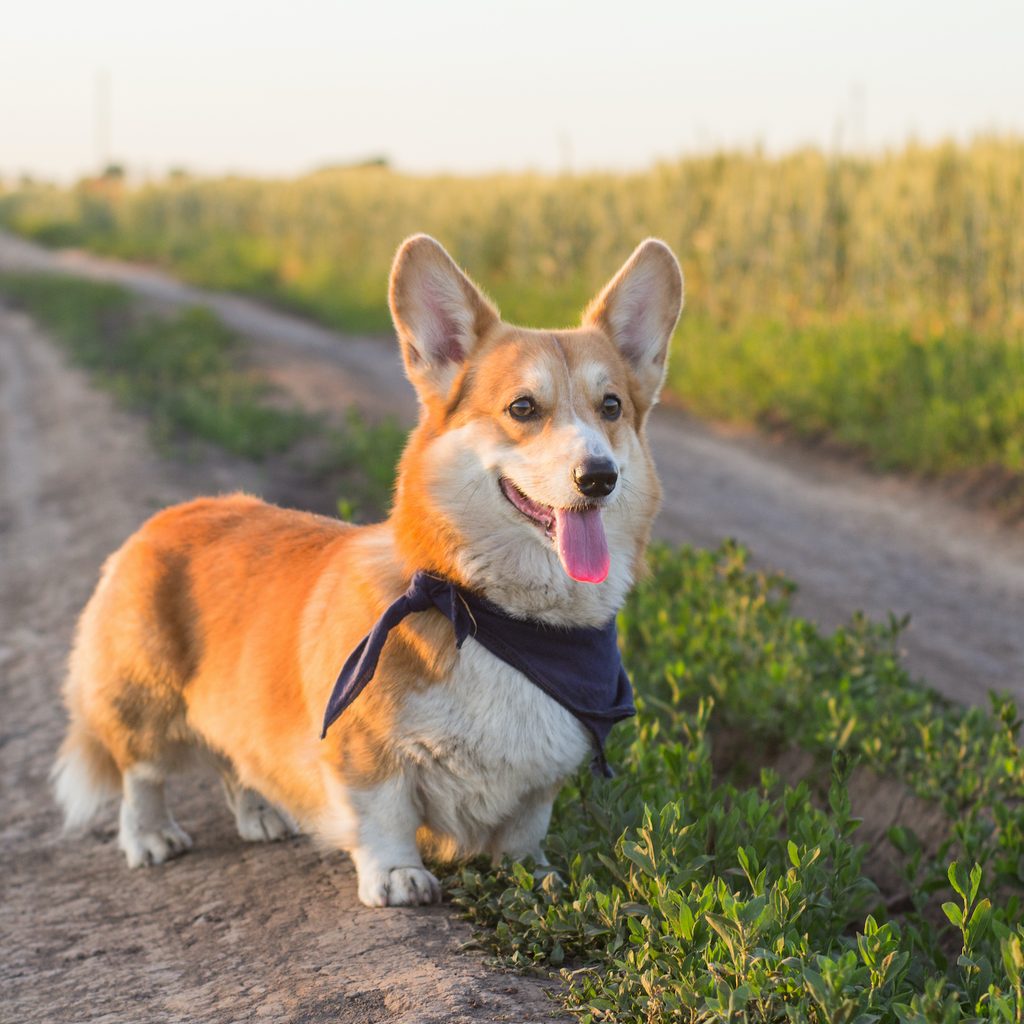If you’re truly a corgi connoisseur, you’ll want to keep reading. Even if you’re already knowledgeable about the different corgi breeds (yes — there’s more than one!), do you know how to tell the breeds apart? Or what kinds of jobs these dogs can do?
By the time you’re done reading, you’ll know these facts and more, including some that can help you determine which adventurous corgi breed is bound to be your next best pal. Whatever you decide, you can sleep happily at night knowing you have one smart, sweet, and adorable four-legged friend.
Here’s what you need to know about the different corgi breeds.
How many breeds of corgi are there?
Even though corgis come in a variety of coat colors and personalities, there are only two corgi breeds. This may come as a surprise to some, especially since many people confuse the two types.

What are the different breeds of corgis?
Pembroke Welsh corgi
One of the corgi breeds is the playful Pembroke Welsh corgi, the newer of the two. These dogs have short, nub-like tails, and pointier ears than the other corgis. The Pembrokes tend to be smaller and more outgoing than their neighboring breed, too. Breeder/owner/handler Anne Bowes told the American Kennel Club (AKC) that these cuties are “high energy, friendly (even effusive), affectionate, happy and funny at times.” This likely helps makes them the 13th most popular breed, according to the AKC.
Cardigan Welsh corgi
Though slightly shyer than the Pembroke, the Cardigan Welsh corgi is still incredibly affectionate and playful with family. There are a few physical characteristics that set them apart, too: larger, more rounded ears; a long tail; and a larger body. Cardigans also have a wide variety of coat colors and patterns, including:
- brindle
- black and white with brindle or tan points
- red and sable with white markings
- blue merle
Some pet parents appreciate the more laid-back energy of the Cardigan Welsh corgi, Cardigan breeder Vivian Moran told the AKC. This breed also tends to bark less frequently. Still, both breeds are apt to be the life of the party when they feel like it. As Moran puts it, “A Cardigan will generally assess a situation before he decides to take part. A Pembroke always seems ready for a party.”
Despite being easily, and frequently, confused, these two corgi breeds are completely unrelated to one another. Other than sharing a similar purpose — herding and guarding livestock — and their homeland, Wales, these breeds’ histories and ancestries have never overlapped.
The Celtic people of Europe introduced the Cardigan Welsh corgi’s ancestor to Wales around the year 1200 B.C. This ancestor is in the same lineage that brings us the dachshund we know and love today. The Pembroke Welsh corgi, on the other hand, arrived in Wales at the time of the Vikings. They are descendants of the Nordic Spitz breeds and can be traced back to about 1000 A.D.

Which corgi is smaller?
Though the two corgi breeds aren’t exceptionally different in size, there is a noticeable difference. Among Cardigans — the older breed — males typically weigh 30 to 38 pounds and measure about 10 to 12.5 inches tall from withers (the top of the shoulders) to paws (via AKC). As for females, you can expect to see a similar height but a weight of about 25 to 34 pounds.
Pembroke Welsh corgis are a bit thinner, standing about 10 to 12 inches tall at the shoulder. While males of this breed can weigh up to 30 pounds, females rarely exceed 28. This makes the Pembroke the smaller of the two breeds, though not by much.
What is the cutest type of corgi?
At PawTracks, we believe the cutest dogs are the happiest ones. Any corgi will make an absolutely adorable companion, but do be sure you’re ready to take on the responsibilities of owning these smart, peppy dogs. There are certainly a few small but noticeable differences between the Cardigan and the Pembroke Welsh corgis, so a little research may be exactly what you need to decide which breed is the best for your home.
Were you surprised to learn about these breeds, or about how they’re completely unrelated? If so, you’re certainly not alone, though now you’ll get to be the one to break this fun fact to all your corgi-loving friends.



